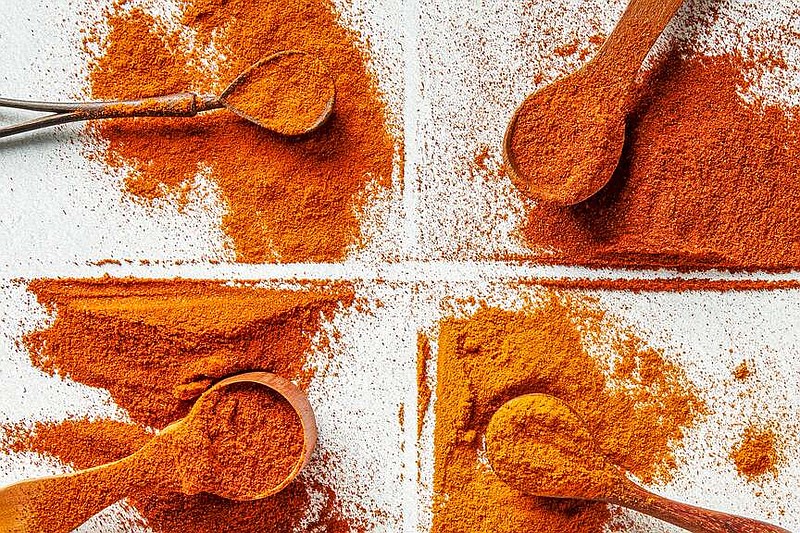Paprika is among the pantry staples that don't get the respect they deserve. Like bay leaves and turmeric, it has been maligned as one-note -- or worse. The sentiment goes something like this: Is paprika anything more than a flavorless red dust? Does it actually taste like anything?
First: If your paprika does not have any discernible smell or taste, replace or upgrade it. Those two things alone may bring you a new appreciation for this spice used in a variety of cuisines and dishes.
"Most home cooks have never tasted fresh, high-quality paprika," says Ethan Frisch, co-founder and co-CEO of spice brand Burlap & Barrel. "Most of what you find at the supermarket is essentially dust, having gone stale long before you open the jar."
Broadly speaking, paprika is a spice made from dried and ground peppers. "The flavor of paprika can range from mild to pungent and hot, the color from bright orange-red to deep blood-red," Sharon Tyler Herbst and Ron Herbst say in "The New Food Lover's Companion." You can find paprika sourced from Spain, South America, California and Hungary, "with the Hungarian variety considered by many to be superior," they write. Spice company Penzeys notes that "Hungary has the sunshine needed for sweet, rich flavor, and the knowledgeable farmers to nurture the crop from planting to harvest."
Here's what else you need to know about buying and storing paprika, as well as the different types and how best to use them.
BUYING AND STORING
Frisch offers a great description of what you should be looking for: "Really good paprika should announce itself as soon as you open the jar. The color should be a vivid, vibrant red, without any white or orange flecks. The texture should be soft and slightly clumpy, not dried out or dusty. The aroma should be bright and sweet, like fresh garden vegetables, and the flavor should be sweet, tangy and savory, like sun-dried tomatoes."
Frisch suggests seeking out single-origin paprika from a specialty spice shop for the best freshness and flavor. While Burlap & Barrel is among the brands that sell paprika from Hungary, you can find other options from Hungary and Spain that have received the Denominazione di Origine Protetta label from the European Union, meaning they come from a particular area.
Frisch recommends having two types of paprika in the house -- sweet Hungarian and smoked.
While advice on how long to store ground spices ranges from six months to a year, "paprika loses its nuanced flavor with age, so we recommend replacing it every six months or so," Megan Ginsberg writes at Cook's Country.
SWEET PAPRIKA
Sweet paprika is a grocery store and pantry staple. It should bring fruity, earthy flavors and bright red color to your dishes. Paprika pairs well with many vegetables and proteins, but especially with beef, chicken, eggs, fish and pork, according to "The Flavor Bible" by Karen Page and Andrew Dornenburg.
Labels on sweet paprika may not specify where it came from. There are options beyond generic or Hungarian, though. Penzeys, for example, sells a California sweet paprika, which it describes as "deep red, mild and sweet, nice for chicken but browns with long cooking."
Hungarian sweet paprika "adds a lot of richness and veggie sweetness to stews, sauces and greens," Frisch says. You'll find it called for in such traditional dishes as chicken paprikash, stuffed cabbage and goulash, though it's right at home in rubs, marinades and dressings.
HOT PAPRIKA
"Hot paprika, most often used in chilis, curries or stews, can be made from any number of hot peppers," Ginsberg writes. "It can range from slightly spicy to punishingly assertive, and it shouldn't be substituted for sweet paprika in cooking." If you need hot and only have sweet, use sweet paprika in conjunction with some cayenne pepper. Penzeys and the Spice House are among the brands that offer a half-sharp paprika, which has more kick than sweet but less than hot.
As with sweet, you can find hot paprika with no specified source and others from Hungary.
Frisch says that hot paprika "goes stale especially quickly," meaning you may lose the nuance that makes it more than just spicy. In addition to the classic Hungarian dishes listed above, try a little in chocolaty desserts, such as brownies. Frisch likes to make a tonic combining it with honey in boiling water when he has a sore throat or cough.
SMOKED PAPRIKA
Smoked paprika is also known as pimenton, thanks to its Spanish origins. It's made from peppers smoked and dried over oak fires, "The New Food Lover's Companion" says. To keep things interesting, it also comes in three varieties: sweet/mild (dulce), bittersweet/medium hot (agridulce) and hot (picante). The sweet style, however, is what most American home cooks will be familiar with and have access to.
As with any smoked ingredient, a little pimenton can go a long way. If you're worried about overpowering a dish, try cutting smoked paprika with some sweet to mellow it out and create a more well-rounded flavor, chef Alex Raij recommends in "The Flavor Bible."
Smoked paprika is useful in vegetarian or vegan dishes, such as Vegan Braised Collard Greens With Miso and Smoked Paprika, to capture some of the essence of bacon, ham or other meat. It also works well stirred into mayonnaise for a lively sandwich spread and in spice rubs.

